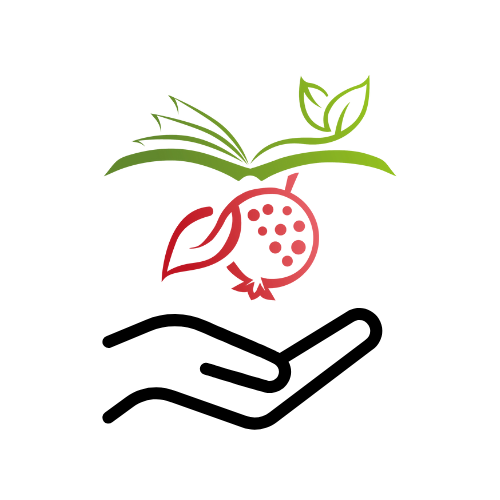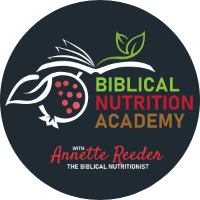Medicinal Herbs in Your Kitchen?
Here's 11 Common Herbs That Heal!

Herbs and Spices add more than just aroma flavor to a meal.
Medicinal herbs, that are probably already in your kitchen, are packed with health benefits that may very well surprise you.
Do you know that all herbs and spices have medicinal properties?
It’s true, and each one offers different healing effects ranging from helping you recover from the common cold to preventing cancer and disease.
In this post, I’m going to share with you detailed information about the healing power of some of the most common medicinal herbs many people have on their shelves, the best way to use herbs and how to incorporate more health into your life starting today!
Find out what God has to saying about healing herbs and man’s confirmation that God’s word is true.
What are Medicinal Herbs and Why You Need Them?
Medicinal herbs are plants that are used for medicinal purposes. (1)
Using herbs or combining herbs for medicine is as old as humankind itself. The oldest written evidence of medicinal herbs goes back 5000 years, found on a Sumerian clay slab.
Today, there is a prescription medicine dedicated to every ailment and inconvenience under the sun. Even though it may be beneficial to use over the counter medicines in some cases, modern medicine focuses on sickness rather than practices of creating health. These tend to mask the symptoms of underlying health issues be it physical, mental or spiritual. With death by prescription being the 4th leading cause of death in America, isn’t it wise to use caution?
What if there was already a plan designed for you and your health? A sustainable way to build up your body’s immune system,(2) and put ailments to rest, without unwanted side effects? Well, there definitely is.
Ezekiel 47:12: “And on the banks, on both sides of the river, there will grow all kinds of trees for food. Their leaves will not wither, nor their fruit fail, but they will bear fresh fruit every month, because the water for them flows from the sanctuary. Their fruit will be for food, and their leaves for healing.”
Medicinal herbs can be used for (3) everything from wounds to digestion issues, sleep problems, circulation, organ health, bone health, and so so much more. Herbs and spices are used interchangeably. Not only do herbs help the body to heal, but you can create flavorful, aromatic dishes by using herbs and spices.
Incorporating Natural Remedies into Your Meal Plan

Genesis 1:29: “And God said, “Behold, I have given you every plant yielding seed that is on the face of all the earth, and every tree with seed in its fruit. You shall have them for food.”
Plants contain ample amounts of phytochemicals, which have been linked to the reduction of chronic diseases. (4)
Therefore think of the implications of using herbs in your dishes on a daily basis!
In addition to daily use, you can create meals that are targeted to relieve or treat ailments. An example of this would be making a soup with herbs that help elevate colds, congestion, and inflammation.
What are the most common medicinal herbs used in cooking and what are their benefits? Before we get to the list let’s look at if there’s a difference between using medicinal herbs dried or fresh.
How to Get More Healing and Health every day
What’s been most revealing is that adding medicinal herbs to your dishes spices up your meals with active compounds that reduce the risk of disease and help to reverse or elevate many ailments of the body.
If you're looking for more ways to improve your health and your walk with the LORD, check out my Treasures of Health Nutrition Manual where you can find the health benefits of not only herbs and spices, but a complete resource for all your health concerns. It covers everything from physical, mental and spiritual health as well as home health.
It’s no wonder these herbs are called medicinal and with all of this in mind, aren’t they worth adding to your plate?
If you want to go even deeper into medicinal herbs, this 4-page Chef's Guide to Herbs & Spices contains facts, definitions and tips & tricks for buying and growing herbs and spices and using them in all areas of cooking.
You'll learn how to make the most out of fresh herbs and how to dry and store them for future use. If you’re interested, check out the link above!
1.Basil:

Basil is part of the Mint family with up to 150 species with flavors ranging from sweet to spicy licorice, to lemony.
Basil is a good source of iron, folate, calcium, magnesium, omega-3 fatty acids, a great source of copper, vitamin A and an excellent source of vitamin K and manganese. (5)
It helps to reduce inflammation (6) and swelling, aids with a variety of digestive problems such as stomach cramps, vomiting, and constipation. Basil also reduces the effects of oxidative stress and contains anti-aging properties. (7)
You can grow it indoors, store it fresh in the refrigerator wrapping it in a damp paper towel, infuse it in oils or freeze it in ice cubes which you can use anytime for cooking. Because of its violate oils, it’s best to use towards the end of cooking for maximum flavor.2.Bay Leaves:

Bay leaves are part of the Lauraceae family and the leaves come with a pungent flavor.
According to the USDA nutrition facts, bay leaves contain potassium, Vitamins A, B-6 and C, iron, calcium, and magnesium.
Bay leaves promote relaxation, help with migraines, help to manage stress. In addition, bay leaves help with gas and bloating. (8)
This is one herb that has better flavor after the drying process. It’s often used in soups, sauces, and stews. I recommend using them whole at the beginning of cooking but remove before serving.
3.Cayenne:

Part of the Nightshade family, cayenne is used to add hot flavor and spice to dishes.
Cayenne contains fatty acids, Vitamins K, E, A, C, riboflavin, niacin, folate, minerals such as calcium, iron, magnesium, phosphorus, potassium, and zinc. (9)
Cayenne is a circulatory stimulant, antispasmodic, and carminative. Cayenne pepper helps with chronic pain such as athritis, improves circulation, reduces chills and aids in digestion. (10)
If applied topically, cayenne pepper helps with cramps, muscle spasms, aches and pains, cold and stiff joints, and post-shingles neuralgia.
Caution:
Only use in small quantities on the skin and do not apply to inflamed areas. Avoid getting it in your eyes, this is one spicy, but delicious pepper!
4.Cilantro:

Cilantro is part of the Apiaceae family, its leaves are sweet and pungent with a strong aroma, while the seeds have a lemony orange bitter flavor.
The cilantro seed is known as coriander, mentioned within scripture. Exodus 16:31: The people of Israel called the bread manna. It was white like coriander seed and tasted like wafers made with honey.
It’s a great source of fiber, Vitamins, K, C, E, A, calcium, iron, potassium, and magnesium. (11)
Cilantro relieves indigestion, gas, and diarrhea, reduces chronic inflammation and supports heart health.
Wonderful to use fresh, cilantro is excellent in salads, cooked in dishes with fish, beans, and rice.
5.Cinnamon:

A member of the Lauraceae family, cinnamon was a highly valuable spice in biblical times for its sweet smelling aroma. Cinnamon has antimicrobial and antiparasitic activity. (12)
Some of the vitamins and minerals found in cinnamon include calcium, iron, magnesium, phosphorus, zinc, K and A. (13)
Its benefits include aiding in digestion, relieves nausea, vomiting, diarrhea, and indigestion and improves glucose tolerance in people with type II diabetes. (14)
Sprinkle it on fresh or baked fruit, add a pinch to your tea, mix it into yogurt with fresh oats or incorporate it into baked bread, just a few ways to spice it up with cinnamon.
6.Ginger:

A pungent, aromatic spice, ginger is part of the Zingiberaceae family sold fresh, dried, or ground.
A good source of potassium, ginger also contains 6-Gingerol, (15) (with higher amounts found in fresh ginger), which has some incredible health benefits. This little component is anticancer, anti-inflammation and anti-oxidation which reduces inflammation that leads to disease.
Ginger is used to relieving nausea, vomiting, and aids in digestion. (16)
It’s also reduces pain, motion sickness and the risk of heart attack and stroke.
Ginger can be used in dishes, sauces, paired with fish or in hot beverages.
7.Oregano:

This Mediterranean herb is aromatic, slightly bitter and a member of the Mint family.
It nutritional facts include calcium, iron, magnesium, phosphorus, potassium, and vitamins K, A, folate, and betaine. (17)
Oregano has multiple potent antioxidants that help rid your body of free radicals.
Oregano is used to treat fever, aids in cardiovascular health (18), relieves symptoms of inflammation,
lowers blood sugar and benefits the nervous system.
It’s a Well rounded antiseptic, (19) (against viruses, parasites, fungi, and bacteria) and helps treat vomiting and diarrhea.
Infuse it with oil, or use it in soups, salads, or in your main dishes.
8.Parsley:

Another member of the Apiaceae family, this herb comes with a mild flavor. It’s aroma is stronger when used fresh but it can also be used dried or frozen in ice cubes for later use
A great source of vitamin C, calcium, iron and fiber, parsley contains flavonoids (20) which counter disease-causing agents in the body.
Parsley is good for measles, the lungs, and spleen, Reduces risk for cancer., and aids in indigestion.
Not just a garnish, use parsley in sauces, marinades, and cooked in dishes like soup and quiche.
9.Rosemary:

This herb is very aromatic is another member of the Mint family and can be used either fresh or dried.
It contains calcium, magnesium, potassium, folate, vitamin A and more. (21)
Rosemary enhances memory and concentration., (22) aids in digestion, helps prevent food poisoning and relieves spasms in irritable bowel syndrome.
This is a tough herb to remove after cooking so the key is to finely chop it before use. Pair it with rich dishes such as lamb, with lemons, bake it in flatbreads or infuse it with oil.
10. Turmeric:

This spice has a musky, slightly bitter, and peppery taste and belongs to the Zingiberaceae family.
Containing vitamins K and E and rich in potassium, phosphorus, magnesium, and calcium. (23)
Turmeric is anti-inflammatory, antibacterial, cholesterol lowering and has antifungal effects. (24) Its most active compound is curcumin which has proven health benefits like the potential to prevent Alzheimer’s, cancer and heart disease. (25)
Add it to tofu, curries, soups, stews and more.
11.Garlic:

Part of the Allium family, garlic is best used fresh and has a warm, pungent flavor.
Its nutritional makeup includes calcium, potassium, phosphorus, iron, magnesium, zinc, vitamin C, riboflavin and niacin. (26)
It’s high in sulfur compounds which give it antibacterial, antithrombotic and anticancer activities. (27)
Garlic reestablishes microflora, reduces inflammation, clears the lungs, bronchial tubes and throat (an expectorant) and is a digestive aid. It’s also used to lower blood cholesterol, high blood pressure, relieve the common cold, and prevent diseases such as cancer. (28)
Garlic can be infused in oils, with or without additional herbs and can be used in a limitless amount of cooked dishes.
Medicinal Herbs Dried Vs Fresh
Herbs can be used either fresh or dried, however, it’s good to note that even though dried herbs can stay in your cabinet for longer, some nutrients are lost from the drying process.
Proper storage of medicinal herbs is very important and can help slow down the process of nutrient loss. Always store them in an airtight container placed away from heat and light.
However, we can’t always obtain fresh herbs and in that case, here’s how you can check to see if they’re still fresh:
Check the color of your herbs, make sure green leaves are not faded in color.
Check for a pungent aroma by crushing a couple of leaves.
I recommend using three times the amount of dry herbs as you would fresh herbs to achieve similar benefits for health and the flavor of your foods.
5 Cooking Tips to add Herbs In

I would have to say my favorite spices would be cumin, chili powder and cinnamon.
Any dish with any of these is a favorite!
What’s yours?
When I first started studying spices I had to empty almost my entire cabinet because the spices were either outdated by 10 years, clumped together or were lacking aroma.
Have you checked your spices lately?
Here are five cooking tips when using herbs; feel free to add your own recommendations in the comments!
1. Check for aroma.
You can do this by rubbing the spice in your hands. Aroma comes from the oils in the spice so if that’s missing, toss it out! It’s just dead leaves.
2. How is the Taste?
You may agree that this is the most important way to check your herbs and spices. There should be a distinct, sharp flavor. If it’s lacking flavor, get rid of it!
3. Choose Fresh.
Pre-ground spices may be more convenient, but whole herbs and spices keep more of their essential oils which is also where the majority of the flavor is.
Keep in mind that manufacturers dates are not always the best source to check for freshness. When in doubt, use Sight, Aroma, and Taste as your first indicators of freshness.
4. Do not Sprinkle Spices into Hot Cooking!
While it might be tempting to sprinkle in some spice straight from the shaker to the pan, the steam of the cooking food can get into the spice jar and cause caking or worse, bacteria growth!
Pinch out the amount you want to use into a bowl or small cup and transfer them from there.
5.Grow Your Own
Most herbs are easy to grow and many can be grown together. This will keep your recipes tasting the freshest all year long! Plus, it’s nice to know exactly where your herbs came from.
You can even grow many as part of your landscape design and they look amazing!
With this in mind let’s take a look at 11 common herbs you probably already have in your kitchen and their medicinal benefits.
Reap Outstanding Health Naturally with Medicinal Plants and Herbs

They’re healthy, they’re tasty and they were intended for you.
More studies are being done all the time to unlock the health benefits that can be found in medicinal herbs.
If you go check, you probably have most, if not all of these in your kitchen already!
Explore new ways to add flavor and spice into your meals with my Healthy Treasures Cookbook and from other recipe sources online. The kindle unlimited pdf. version is free!
Try different combinations and bring some health to your plate!
If you have any questions, feel free to leave them in the comment section below.






